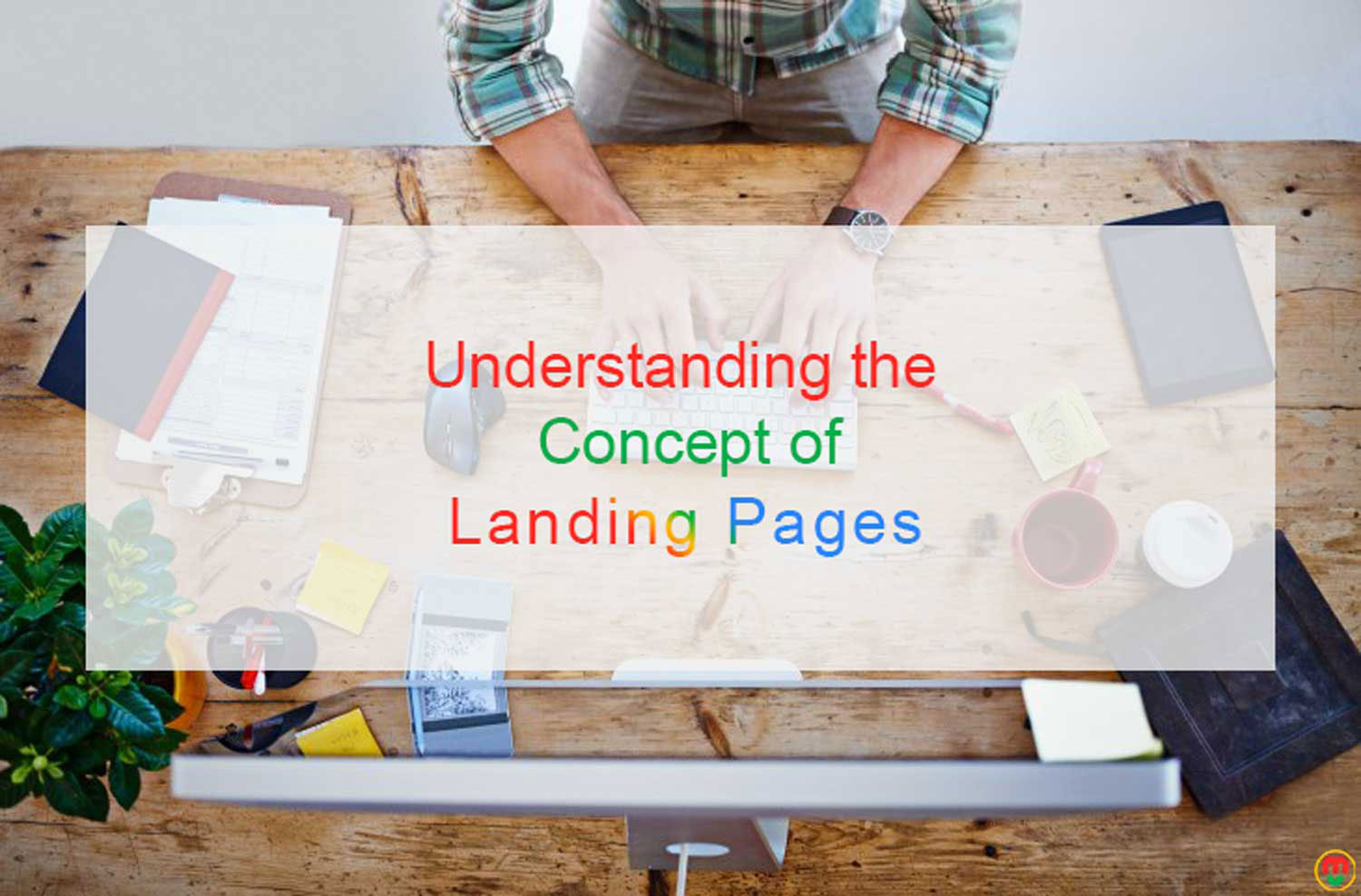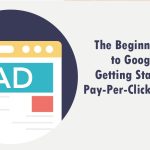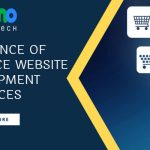In the era of e-marketing, where obtaining leads, conversions, and consumers is the main focus. The greatest method for achieving these objectives is through landing pages. Potential consumers are considered “leads” by new entrepreneurs. Marketers and businesses alike would struggle to profit from their online presence without leads and the methods you employ to generate them. Everything from “What is Landing Page” to all you need to know about landing pages is covered in this article. To learn more about the subject, read the article through to the end.
What is a landing page?
In order to have basic knowledge about a landing page you need to know its definition. Technically speaking, a landing page is an essential component of any company’s internet presence. It was designed to make it easier for your businesses to collect visitor data using “lead” forms.
Landing pages are referred to as a kind of website page but they are not actually a component of a website. These are designed for different purposes like getting customer attention online. Therefore this is what landing pages are in the world of digital marketing.
Designing your pages to meet a certain stream of visitors is necessary if you want an efficient landing page. Your landing page should be more effective the more specifically it is targeted, as clients of today like deals that appear to be tailored specifically for their needs.
Your new landing page will serve as a conduit for attracting leads and potential clients. The secret is to portray yourself in a precise, measured approach while demonstrating your value in a compelling, distinctive way.
The visitors to your landing pages will already be sufficiently intrigued by your company and goods to feel at ease clicking your link. Thus, a good landing page will result in more sales.
How are landing pages different from the main website page?
Your landing page is not as same as other pages of your website. As mentioned in the above section, landing pages are made with different intentions overall. Therefore let’s compare the landing page and web page for a better understanding.
Generally, website pages contain things like content and links to navigate the visitors. This also is based on the idea of putting context related to frequently asked questions, blog feeds, news, social CTAs, etc.
On the other hand, landing pages concentrate on a single idea. Everything on a landing page should support a specific initiative and not get in the way of the main objective, which is to convert visitors. Simply put, your landing page should focus on a single offering, such as a download, product, service, or opportunity.
Why is Landing Page Important?
After reading the following article now you might have understood what landing pages are and how they are different from general website pages. If someone still has doubts regarding creating or not creating landing pages for their product. Then read the following points and find out why landing pages are important.
To Generate Leads
So far you might have read it multiple times, but this is one of the biggest importance of landing pages. Gaining leads was always the reason to create landing pages. A landing page can, however, occasionally be utilized to produce sales rather than leads. The main lesson is that a landing page should assist you in achieving your marketing objectives.
A Place to Keep Your Offers
If you are running a lead magnet campaign then you should be very creative while putting your keyword. This keyword will redirect your visitors to the main form-filling page. The reason it comes under the lead magnet is so that more and more visitors can be converted into a lead. Therefore it can’t be placed under the “About Us” or “Home Page” category. This however gets placed under the landing page.
Helps You Build Credibility
If you launch a sponsored ad related to a product. There are high possibilities your potential customers may click on the link for more details about the product. If your link redirects your customer to the homepage of the website, it could be frustrating for your customers. Because they followed the link for further details about the product mentioned in the ad.
Therefore it is better to redirect your visitors to a landing page that is more relevant to the content your visitors might have seen in the sponsored ad.
Increase Conversion Rate
After a lead generation, the main use of the landing page is to increase the conversion rate. Therefore if you are looking to increase your conversion rate then landing a page is the key for you.
Types Of Landing Pages
There are mainly 2 types of landing pages on the basis of their functioning. Read further to know about them in detail.
Lead Generation Landing Pages
Landing pages for lead generation, also known as lead capture pages. It is mostly used to gather data about potential clients, including names, phone numbers, email addresses, job titles, and companies. In exchange for your services, like ebooks, these website landing pages provide a form where visitors can input their information. In order to cultivate leads’ interest until they are ready to buy, marketers and store owners can utilize the data to contact leads.
Also, by using the data gathered, you can enhance your marketing plans. The marketing campaigns will be intelligently created to concentrate on the target audiences most likely to convert. A lead-generating landing page is beneficial if your goal is to develop and strengthen relationships with possible clients or if you just want to learn more about your leads.
Click Through the Landing Page
A click-through landing page, as opposed to lead generation pages, is made to persuade visitors to click through to another page where the conversion takes place. These click-through landing pages are frequently found on e-commerce sites or websites that are more frequently utilized to make sales than to collect lead information.
To entice potential consumers and prompt them to take the desired action, a lead generation page must contain the components of an effective site landing page, such as product details or client testimonials. The “Key factors a good landing page should have” section lists these crucial components.
Characteristics Of A Successful Landing Page
A landing page is a vital part of digital marketing under online campaigning. If you have a well-designed landing page then it may have the potential to convert visitors into leads or customers. Well, if everyone would have been so good at making a landing page. Then everyone might have been successful under this category. It is important to know what will resonate with your customers.
Your landing page is a part of your brand identity, just like every other component of your online presence. The use of appropriate graphics, copy, formatting, etc., is crucial as a result. This will help your customers and consumers recall your business as one that is dependable and familiar. We are listing some of the tips that you can follow in order to make a good landing page.
-
Know your goals
It will require work if you have a desired marketing objective. The kind of marketing is irrelevant as long as you are confident that your plant will succeed with the appropriate level of input. Be clear about if your goal is to generate leads through all of the email newsletter signups or to drive people to your e-commerce website. After you are aware of your objectives, you may start to match them with those of your clients.
-
Headlines are crucial
A solid title is one of the most crucial elements when it comes to best practices for landing page design. Sensational headlines typically need to be succinct and to the point. Maintain the word count between 6 and 12 only.
Letting your visitor know what they can acquire from you on that page is the primary goal of any landing page headline. Headlines need to be evocative, genuine, and captivating, for instance:
- Specialized manual for rebranding and brand renewals.
- How to enhance the usability of your website to increase traffic.
- When should you invest in your most valuable asset?
Keep in mind that the copy on your website page should also have engaging subheadings. Here is the material that will help direct visitors to your call to action on the page.
-
Answer the obvious query
Developing a landing page entails generating leads and conversions from it. It is primarily why you are devoting time to making it. Yet, your clients ought to view it as a means of receiving something in return. Because of this, you should thoroughly consider your target market and consider what you can offer them to boost their desire to convert.
A B2B customer will gladly exchange their email address for any beneficial incentive, a free gift, or a discount code. Designing “lead magnets” that persuade customers to click on your links and proceed through the sales funnel is possible when you are aware of what your customers want from you.
-
Stand out with your call to action
Unlike a homepage, which greets visitors to your website and provides them with some background material on your company. The goal of landing page design is to persuade visitors to take action. The “CTA” or call-to-action is the element on a decent opt-in page or landing page that instructs visitors on what to do next after they arrive at your website. Therefore follow the following tips:
- To make the button more visible, use a contrasting color. Unlike the rest of your internet page, your call-to-action button shouldn’t blend in. Make sure that it immediately captures a visitor’s attention.
- Your website’s landing page will be approached by your visitors from a “what will I get from this” standpoint. Conversions may rise if you use the phrase “This is what we have for you” when addressing the client.
- Employ strong language: Your call to action should be brief and straightforward, but you also need to use the correct phrases. Avoid using impersonal words like “Submit” or “Download.”
When Is a Landing Page Useful?
If you read the article till now then you might have already been aware of the importance of landing pages. Under this section of the article, you will get to know about some events where you can use the landing page.
Promote Your Book
If you recently finished writing a book and had it published. To share or advertise it, you need to have a reliable platform. Hence, the next concern is where to find such a platform. Thus you may direct traffic to the page, make a landing page, insert a button with a download link for the book, and promote it. Just that. Presumably, I suppose. You may promote an ebook (which is a reading platform online) by using a landing page. Which will bring more leads/readers as your customers.
Webinar Awareness
If you need participants for a webinar you have coming up. For this, you can employ landing pages. You don’t need a flashy landing page. It might be as straightforward as possible yet appear luxurious.
Encourage SaaS Product
If you are a developer and wish to advertise your SaaS offering. A landing page could really assist you in attracting potential customers. You can offer a free trial of your launch to your customers. Put all the details on the landing page, hence you will get some potential customers.
Types of Landing Page Offers
A site landing page’s main purpose is to turn visitors into leads for your company. To accomplish this, you must present them with relevant content directly on the page. You can give a variety of content offers on the landing page for a website. This leads us to a different type of landing page offers:
Email Newsletter Subscription:
Most blogs have a newsletter section where readers can sign up to receive emails with your company’s most recent news. Once they click the CTA button in this part and exit their emails, they are finished. To direct clients to this page for a subscription, you may also connect the URL of a landing page for the website to this button. This increases the likelihood that people will take action by subscribing to your blog by providing them with additional information about the benefits they can gain.
Ebooks and Whitepapers:
If you use the internet frequently, you’ve probably seen offers for e-books and whitepapers on website landing pages. In order to access the content, people may be eager to enter their personal information into the form if your materials contain a wealth of useful information and, more significantly, are relevant to their interests.
Free Demo Trial:
Offering a free demo trial is unquestionably a must-do on your checklist if you have marketing efforts planned for your new product or service. Users are required to provide their personal information in order to take advantage of the offers on your website’s landing page. People who gave you their contact information for the demo are genuinely interested in what you have to offer. These leads are extremely near the point of purchase. Therefore don’t pass up the chance to contact these potential clients and follow up, opening the door for the sales team to close the deal.
Online Course Enrollment:
If you have an online course and want people to enroll in it. Then you should think about creating a well-designed landing page. A thorough course explanation is simply one aspect of an informative landing page that attracts potential students. But, there are various ways to attract and develop leads. Also, visitors may find it more convenient to contact you privately through the website landing page after enrolling in the course to ask for assistance or feedback on their performance.
App Download:
If your organization is creating a mobile application for a product to improve client experiences. Thus, this event needs its own website landing page. Also, by enticing users to download your app, you can collect leads here. Google Analytics will let you understand who is visiting your landing page and installing your product. Then, make the most of the data to optimize the page and gain experience for upcoming marketing initiatives.
The Components of a Landing Page
Most landing pages adhere to a relatively consistent formula that can, of course, be changed depending on the objectives of your specific PPC campaign. Therefore these are some important components of the landing page.
Branding Continuity
When it comes to leveraging already-existing brand familiarity, Smartsheet has done a good job. By maintaining consistency with their website, they can make sure that the user experience is a seamless transition from research to purchasing decisions. The landing page slightly deviates from the overall theme of their website. Those who have already visited the site will easily recognize the colors, logo, and layout because they are similar enough.
Prominent, Singular Conversion Point
On this page, there is just one conceivable action: submitting the sign-up form. The ease with which Smartsheet has made it possible to register an account is another crucial point. To achieve a low bounce rate and high conversion rate, they have taken down as many access obstacles as they can.
Value Proposition and Offer Details
The text on the page is succinct and easy to read, and it is organized in a bullet-pointed fashion to make it easier to peruse. Users are typically less interested in long blocks of text at this point in the purchase cycle than they are in facts and practical applications. In addition to increasing engagement, utilizing icon-based bullet points helps the topic be graphically communicated. For this particular use case, tables, charts, and comparisons are occasionally other well-suited content mechanisms.
Social Validation
By leveraging the power of a well-known brand to increase trust in Smartsheet, the social validation technique used here excels. Even if you don’t have a well-known brand to support you, employing social validation can help you qualify your product.
Trust Building
Another strategy to increase confidence through social proof is to display other brands that already utilize Smartsheet. By including the Google sign-up feature in the conversion form, you can further emphasize this strategy of establishing trust by connection.
It’s as crucial to observe what is absent when discussing a landing page’s elements. There aren’t any menu options at all, as you’ll see. This “dead-end” navigation serves to prevent user distraction from extraneous and pointless stuff.
Also, you’ll see that there aren’t any CTAs for social networking, which may be annoying. Moreover, there are no off-page links to additional resources or references. Keep these following points in your head and this will help a business to build connections with its customers.
The Final Thought:
You now have access to a thorough manual that can be used by anyone to create and improve landing pages for conversion. One thing that this article has shown is that you don’t have to be an expert developer or marketer to create a successful landing page. In this article, we have tried to include everything that a beginner needs to know related to landing pages. Hence, hope you had a full reading knowledge.
FAQs
Can a landing page be used in place of a website?
Marketers use landing pages to send consumers to particular web pages. They might be connected to any email, advertisement, or social media post. Landing pages are useful for achieving short-term marketing goals, yet they might not be a good substitute for a website. With the help of a landing page, you could, for instance, let users order items before they go on sale or register for limited-edition products.
How can a landing page be made in Mailchimp?
On Mailchimp, it’s simple to develop a lovely landing page. How to begin going is as follows:
- Build a landing page by using any template of your desire or else you can also make the template your own to reflect the style of your company.
- Create a page title that is specific.
- Make a URL and add it.
- Choose your tags and audience.
- Insert tracking.
- Publish and save.
How do a website and a landing page differ from one another?
The detailed explanation regarding the difference between has been mentioned in the article above. But let’s quickly compare and contrast two of them. Landing pages are often developed to support other initiatives and are more concentrated on achieving short-term marketing goals. In addition, a landing page will include fewer links and targeted CTAs. In contrast, a website gives users access to a number of pages. Where they may learn about the various goods and services offered. As well as the goals and mission of the business, as well as its shipping practices. Shoppers also use websites to complete transactions.









